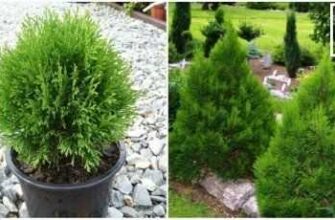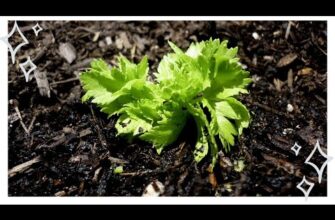- Гортензия древовидная
- Посадка гортензии древовидной
- Выбор сорта
- Подготовка почвы и места посадки
- Правила посадки
- Уход за гортензией древовидной
- Описание сортов гортензии древовидной
- Сорт «Annabelle»
- Сорт «Limelight»
- Сорт «Pinky Winky»
- Как выбрать место для посадки гортензии древовидной
- Как правильно поливать гортензию древовидную
- Удобрение гортензии древовидной: как и когда проводить
- Основные болезни и вредители гортензии древовидной
- Болезни гортензии древовидной:
- Вредители гортензии древовидной:
- Как укоренить черенки гортензии древовидной
- Причины и способы обрезки гортензии древовидной
- Вопрос-ответ:
- Какая основная особенность гортензии древовидной?
- Как правильно посадить гортензию древовидную?
- Как ухаживать за гортензией древовидной?
- Какие сорта гортензии древовидной существуют?
- Какой срок цветения у гортензии древовидной?
- Видео:
- 05 04 17 Посадка саженца гортензии древовидной весной
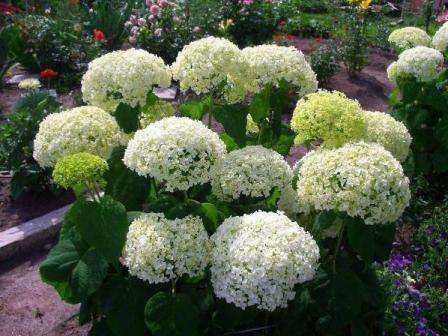
Гортензия древовидная — это один из самых популярных видов гортензий, который известен своими крупными, яркими цветами. Она отличается своей красотой и привлекательностью, и поэтому широко используется в ландшафтном дизайне и как декоративное растение.
Для успешной посадки гортензии древовидной необходимо выбрать хорошо освещенное место, защищенное от прямых солнечных лучей. Растение предпочитает плодородные, хорошо дренированные почвы. Перед посадкой рекомендуется приготовить яму, размер которой должен быть примерно в два раза больше корневой системы гортензии. В яму следует добавить органическое удобрение и хорошо перемешать с почвой.
Важным моментом в уходе за гортензией древовидной является полив. Растение требует регулярного полива, особенно в период сухости. Однако, стоит помнить, что гортензия не переносит переувлажнения почвы, поэтому важно контролировать количество влаги. Также стоит обратить внимание на подкормку растения, которую следует проводить несколько раз в год. Это поможет поддерживать здоровье и красоту гортензии.
Гортензия древовидная имеет разнообразные сорта с различными оттенками цветов и формами соцветий. Некоторые сорта отличаются более крупными цветами, другие — более компактным размером. Среди популярных сортов можно выделить ‘Annabelle’ с крупными белыми цветками, ‘Limelight’ с ярко-зелеными соцветиями и ‘Pinky Winky’ с двухцветными соцветиями.
Гортензия древовидная
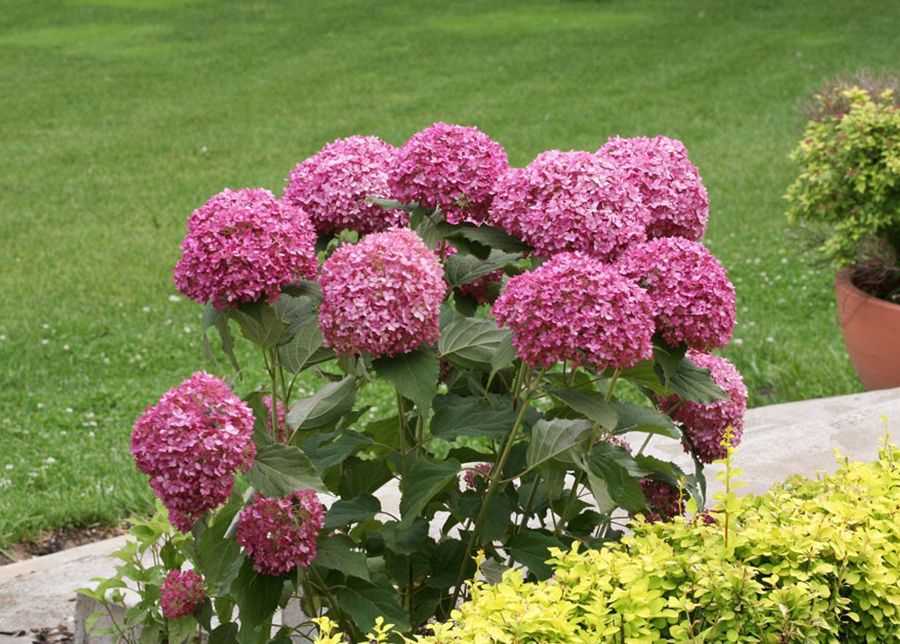
Гортензия древовидная — красивое растение, которое привлекает внимание своими большими, яркими соцветиями. Она относится к семейству гортензиевых и является одним из наиболее популярных сортов гортензии.
Описание: Гортензия древовидная характеризуется прямыми стеблями, достигающими высоты до 4-5 метров. Листья крупные, темно-зеленые, глянцевые, сердцевидной формы. Цветы собраны в широкие, густые соцветия, состоящие из мелких цветков разных оттенков: белого, розового, синего или фиолетового.
Посадка: Гортензию древовидную рекомендуется сажать на солнечных или полутенистых участках с рыхлой, плодородной почвой. При посадке следует обеспечить достаточное пространство для роста и развития корневой системы. Расстояние между растениями должно быть не менее 1,5-2 метров. Подготовьте яму размером 40x40x40 см, заполните ее смесью из перегноя, торфа и песка. Посадите растение, засыпьте яму землей и утрамбуйте.
Уход: Гортензия древовидная требует внимательного ухода. Регулярно поливайте растение, особенно в период сухости почвы. Весной и осенью проводите подкормки органическими удобрениями. Подрезайте сухие и поврежденные ветви для поддержания формы кроны. Зимой гортензию древовидную следует укрыть от морозов, используя сухие листья или смолянистую пропитку.
Посадка гортензии древовидной

Гортензия древовидная — это красивое растение, которое радует своими яркими цветами. Для успешной посадки гортензии древовидной необходимо учесть несколько важных моментов.
Выбор сорта
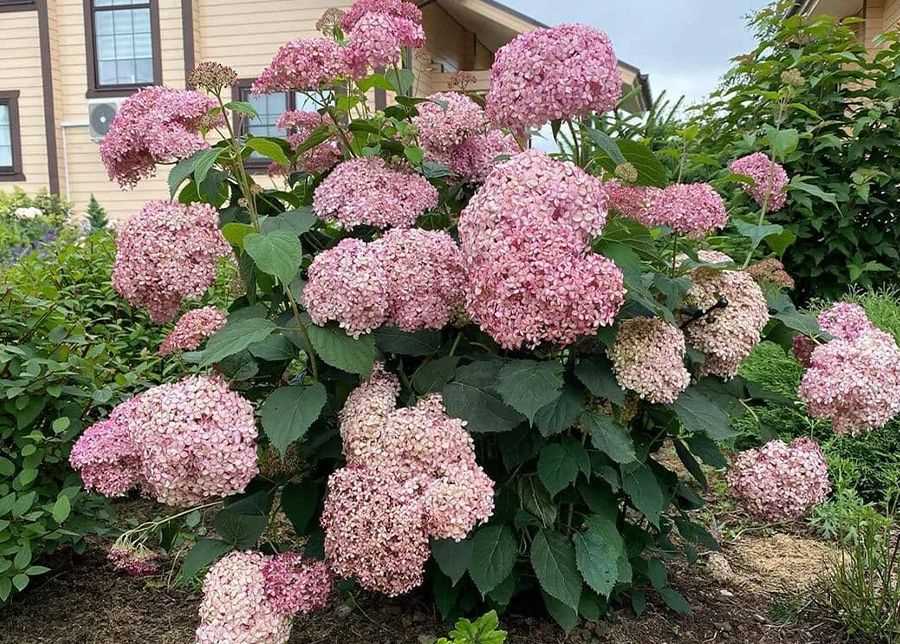
Перед посадкой гортензии древовидной необходимо определиться с выбором сорта. Существует множество различных сортов этого растения, отличающихся цветом, размером и формой цветка. Выбирайте сорт, который соответствует вашим предпочтениям и условиям выращивания.
Подготовка почвы и места посадки
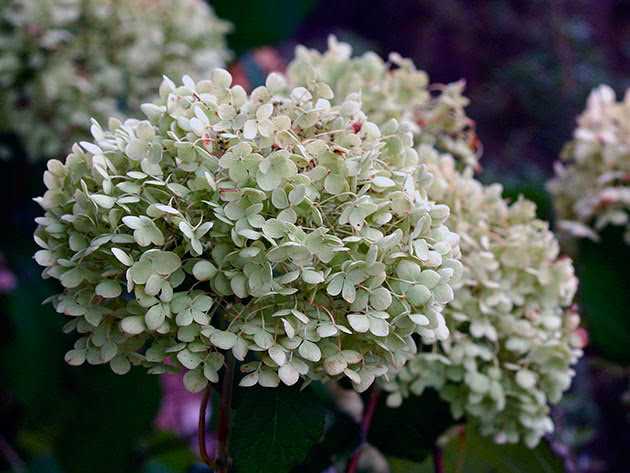
Гортензия древовидная предпочитает солнечные или полутенистые места с плодородной почвой. Перед посадкой рекомендуется подготовить почву, добавив органическое удобрение. Также выберите место, где растение будет иметь достаточно места для роста и развития.
Правила посадки
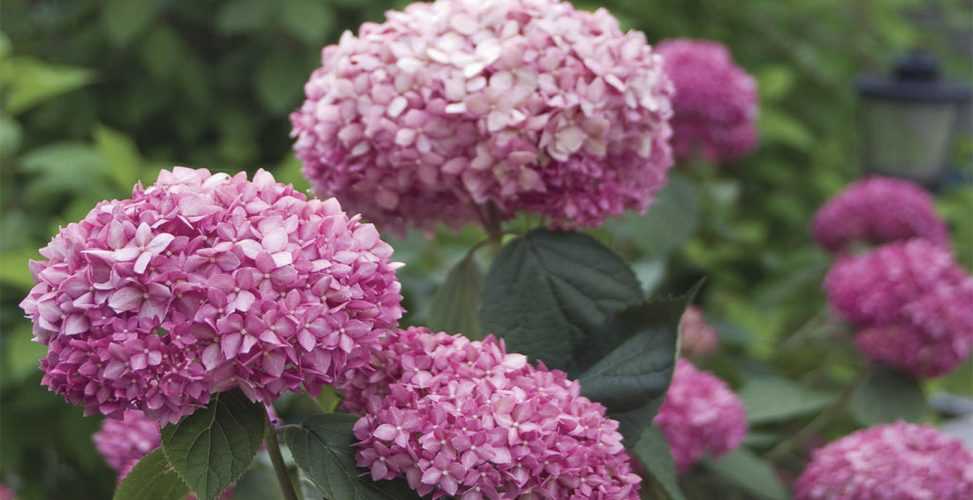
Для посадки гортензии древовидной подготовьте яму, глубиной и шириной около 50 см. Поместите растение в яму, уложив корни аккуратно и присыпав землей. После посадки хорошо полейте растение водой и утрамбуйте землю вокруг него. Не забудьте установить опору для растения, чтобы оно могло поддерживаться в вертикальном положении.
Правильная посадка гортензии древовидной — это основа для дальнейшего успешного ухода за растением. Следуя этим рекомендациям, вы сможете наслаждаться красотой и изобилием цветов вашей гортензии древовидной.
Уход за гортензией древовидной
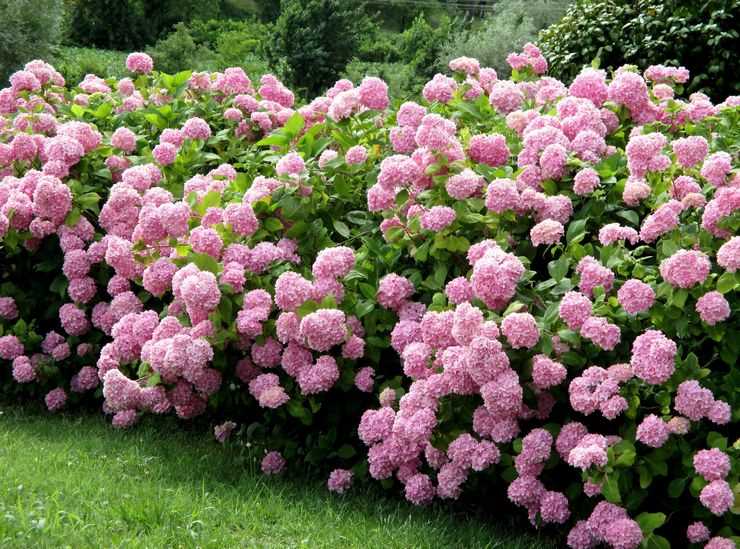
Гортензия древовидная — это красивое и популярное растение, которое требует особого ухода. Правильная посадка является основой для дальнейшего развития растения и его здоровья. Посадка гортензии древовидной производится в теплое время года, предпочтительно весной или осенью. Для посадки выбирается солнечное или полутенистое место, хорошо защищенное от ветра.
После посадки гортензия требует регулярного ухода. Одним из важных аспектов ухода является полив. Гортензия древовидная нуждается в умеренном поливе, особенно в период сухости. Важно учесть, что она не выносит переувлажнения, поэтому почва должна быть хорошо дренированной.
Также гортензия нуждается в регулярном подкормке. Для этого можно использовать органические или минеральные удобрения. Подкормку рекомендуется проводить два-три раза в год: весной перед началом вегетации и осенью после окончания цветения.
Необходимо также обрезать гортензию для поддержания ее формы и стимулирования цветения. Обрезка проводится весной, перед началом активного роста. Удаляются сухие и поврежденные ветви, а также лишние побеги. Размер обрезки зависит от сорта гортензии, поэтому рекомендуется ознакомиться с инструкцией по уходу для конкретного сорта.
Важно учитывать, что гортензия древовидная чувствительна к заморозкам, поэтому в холодные периоды года ее необходимо укрыть мульчей или специальными материалами. Это поможет сохранить растение от неблагоприятных погодных условий.
Описание сортов гортензии древовидной
Гортензия древовидная – красивое растение с множеством сортов, каждый из которых впечатляет своими особенностями. Описание этих сортов поможет вам выбрать идеальную гортензию для вашего сада или садового участка.
Сорт «Annabelle»
Этот сорт гортензии древовидной отличается крупными шаровидными соцветиями, состоящими из мелких белых цветков. «Annabelle» прекрасно смотрится в одиночной посадке или в группах, а также используется для создания живых изгородей. Уход за этим сортом гортензии прост и включает в себя регулярное поливание и подкормку.
Сорт «Limelight»
«Limelight» – это один из самых популярных сортов гортензии древовидной. Его особенностью являются крупные соцветия ярко-зеленого цвета, которые постепенно меняются на розовый или фиолетовый оттенок. Этот сорт отлично подходит для создания ярких акцентов в саду. Ухаживать за «Limelight» также просто – регулярный полив и подкормка обеспечат ему здоровый рост и обильное цветение.
Сорт «Pinky Winky»
«Pinky Winky» – это интересный сорт гортензии древовидной с необычными соцветиями, состоящими из белых и розовых цветков. Вначале они имеют форму пирамиды, а затем раскрываются в шаровидные соцветия. Этот сорт прекрасно смотрится как в саду, так и в срезке для создания ярких букетов. Уход за «Pinky Winky» не требует особых усилий – регулярный полив и подкормка обеспечат ему хорошее развитие и цветение.
Как выбрать место для посадки гортензии древовидной
Гортензия древовидная, или гортензия деревянистая, — это кустарник с большими красивыми соцветиями. Описание этого растения включает в себя его высоту, форму и цвет цветков. Для успешного развития гортензии древовидной необходимо правильно выбрать место для ее посадки.
Уход за гортензией древовидной требует определенных условий. Растение предпочитает полутенистые места, где оно будет защищено от прямых солнечных лучей. Сортов гортензий древовидных много, и каждый из них может иметь свои особенности в уходе. Однако, в целом, гортензии деревянистые требуют регулярного полива, подкормки и удаления увядших цветочных соцветий.
Выбирая место для посадки гортензии древовидной, стоит обратить внимание на состав почвы. Гортензии деревянистые предпочитают кислые и влажные почвы, поэтому рекомендуется использовать торфяную смесь при высадке растения. Также стоит учесть, что гортензия древовидная может достигать значительной высоты, поэтому рядом с ней не должно быть других растений, которые могут ее затенять или задавить.
Так стоп!!! Вы всё ещё не подписаны на наши каналы в Телеграмм и Дзен? Посмотрите: ТГ - (@historyfantasydetectivechat) и Дзен (https://dzen.ru/myshortsstorys)
Итак, при выборе места для посадки гортензии древовидной необходимо учитывать ее описание, особенности ухода и сортовые особенности. Полутенистое место, кислая и влажная почва, достаточное пространство для роста — все это важные факторы, которые помогут гортензии деревянистой прекрасно развиваться и радовать своими красивыми цветками.
Как правильно поливать гортензию древовидную
Гортензия древовидная — это красивое растение, которое требует особого ухода. Одним из важных аспектов ухода за гортензией является полив. Правильное поливание гортензии древовидной поможет ей расти и цвести красивыми соцветиями.
Частота полива: Гортензия древовидная любит влажность, поэтому требует регулярного полива. В период активного роста и цветения растение нужно поливать часто, примерно 2-3 раза в неделю. Однако, стоит помнить, что она не переносит застоя влаги, поэтому важно контролировать уровень влажности почвы.
Как поливать: При поливе гортензии древовидной рекомендуется обильное увлажнение земли. Важно поливать растение у корней, избегая попадания влаги на листья и цветы, чтобы избежать их гниения. Лучше использовать капельное орошение или поливать растение вечером, когда солнце уже зашло и земля успела немного остыть.
Сезонные особенности: Важно учитывать сезонные особенности при поливе гортензии древовидной. Весной и летом, в период активного роста и цветения, полив должен быть более обильным. Осенью и зимой, когда растение находится в состоянии покоя, полив следует уменьшить. В эти периоды важно, чтобы земля не пересыхала полностью, но и не была слишком влажной.
Удобрение гортензии древовидной: как и когда проводить
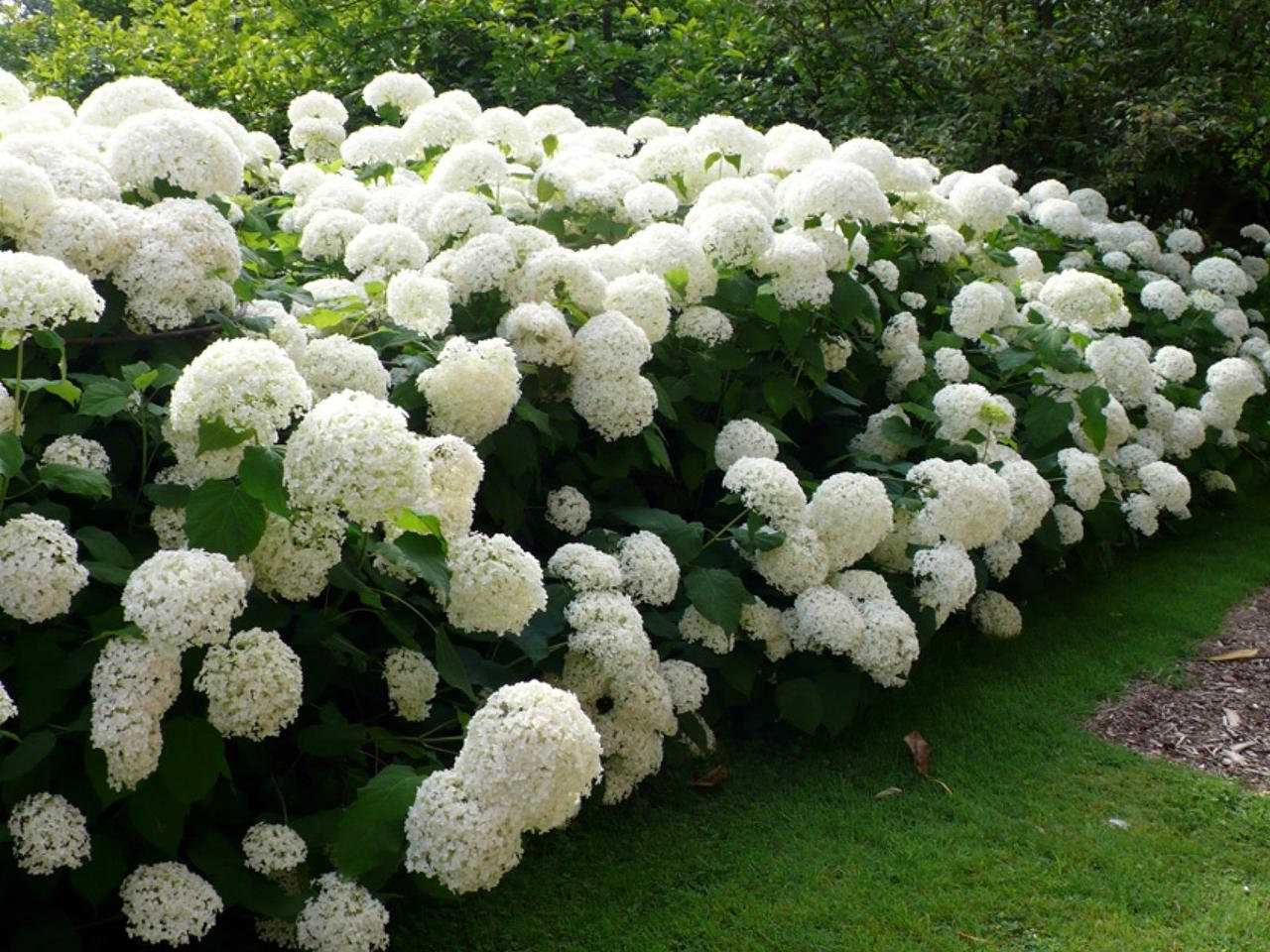
Гортензия древовидная — это красивое растение с массой сортов, которые отличаются своим описанием и цветом цветков.Для достижения роскошного цветения и здорового развития гортензии древовидной необходим правильный уход, включающий в себя и удобрение.
Углубимся в вопрос удобрения гортензии древовидной. Во-первых, необходимо проводить удобрение весной и летом, когда активен рост и цветение растения.
Во-вторых, для удобрения гортензии древовидной подойдут универсальные минеральные удобрения, которые содержат фосфор, калий и азот. Также рекомендуется использовать органические удобрения, такие как перегной или компост.
В-третьих, удобрение гортензии древовидной следует проводить регулярно, но не избыточно. Дозировка удобрений должна быть указана на упаковке и зависит от типа удобрения. Кроме того, необходимо учитывать состояние растения — если оно выглядит здоровым и хорошо развитым, то удобрение можно проводить реже.
В итоге, удобрение гортензии древовидной является важной составляющей ее ухода. Правильное проведение удобрения способствует красивому цветению и здоровому развитию растения. Однако необходимо помнить, что удобрения следует использовать с умом и не переборщить с их количеством.
Основные болезни и вредители гортензии древовидной
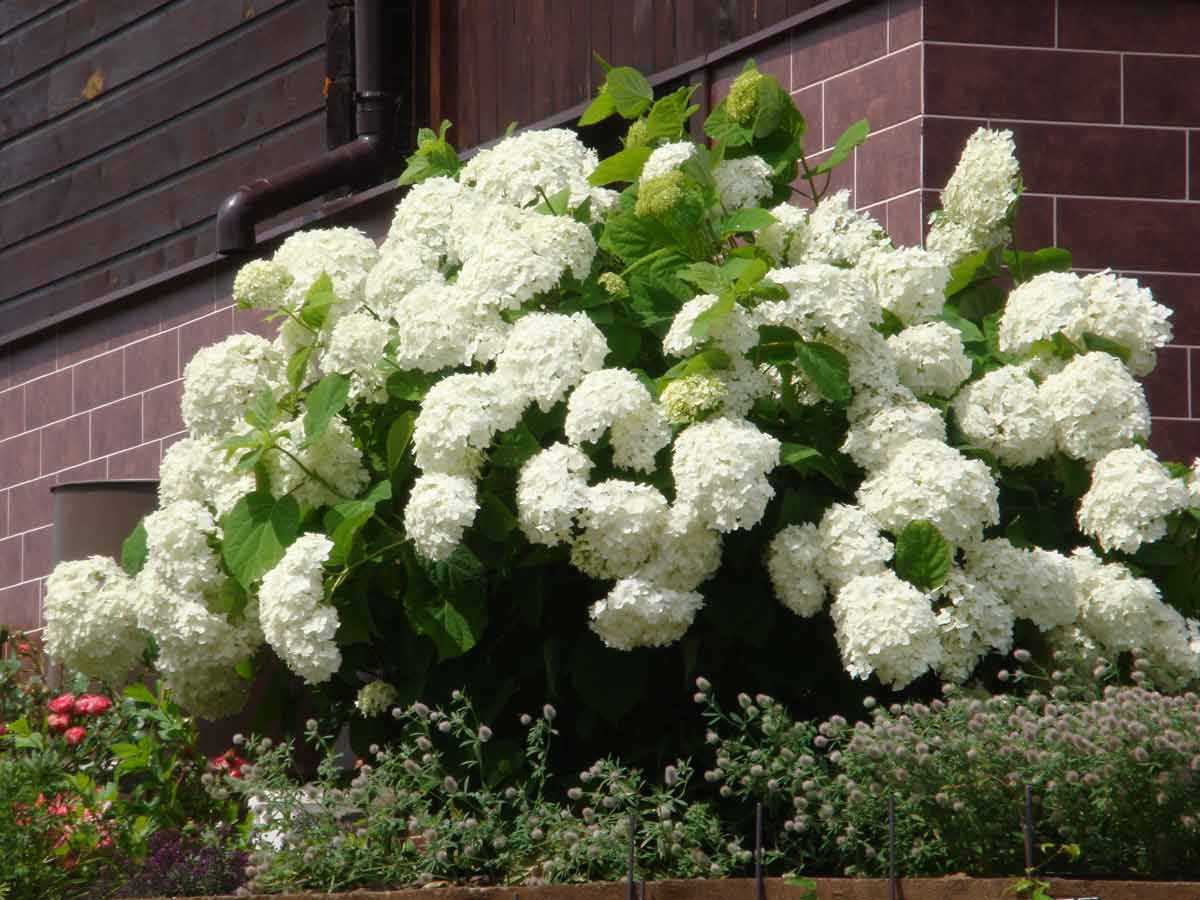
Гортензия древовидная является достаточно устойчивым растением, но все же может подвергаться нападению различных болезней и вредителей. Важно знать, какие проблемы могут возникнуть и как с ними бороться.
Болезни гортензии древовидной:
1. Поражение мучнистой росой. Эта грибковая болезнь проявляется на листьях гортензии в виде белого налета, напоминающего муку. Для борьбы с этой болезнью используют специальные препараты.
2. Ржавчина. Листья гортензии могут страдать от ржавчины, которая проявляется в виде коричневых пятен на поверхности листа. Чтобы избежать поражения ржавчиной, регулярно осуществляйте подкормку гортензии и поддерживайте нормальный уровень влажности почвы.
Вредители гортензии древовидной:
1. Паутинный клещ. Этот вредитель образует тонкую паутину на листьях гортензии и питается их соками. Чтобы избежать поражения паутинным клещом, регулярно опрыскивайте растение водой и используйте специальные инсектициды.
2. Щитовка. Этот вредитель образует защитные щитки на листьях и стеблях гортензии и питается их соками. Чтобы избежать поражения щитовкой, регулярно осуществляйте осмотр растения и удаляйте щитки с помощью мягкой щетки или ватного тампона, смоченного спиртом.
Как укоренить черенки гортензии древовидной
Гортензия древовидная – изящное растение с крупными и яркими цветками, которые могут быть белыми, розовыми, фиолетовыми или голубыми. Чтобы получить новые растения, можно укоренить черенки гортензии древовидной. Этот метод размножения позволяет сохранить генетические особенности и цветовые характеристики родительского растения.
Для успешной укоренения черенков необходимо провести несколько простых шагов:
- Выберите здоровые и сильные побеги гортензии древовидной.
- Отрежьте черенки длиной около 10-15 сантиметров.
- Удалите нижние листья и оставьте только верхние 2-3.
- Поместите черенки в контейнер с влажным и питательным грунтом.
- Укрыть черенки пленкой или стеклом, чтобы создать тепличный эффект.
- Регулярно проветривайте и увлажняйте черенки, чтобы предотвратить загнивание.
- По истечении 4-6 недель черенки должны показать признаки укоренения.
- Пересадите укорененные черенки в отдельные горшки с питательным грунтом.
Важно помнить, что укоренение черенков гортензии древовидной может занять некоторое время, поэтому требуется терпение и внимание к растению. Правильный уход после посадки черенков позволит им здорово развиться и стать красивыми и цветущими растениями.
Причины и способы обрезки гортензии древовидной
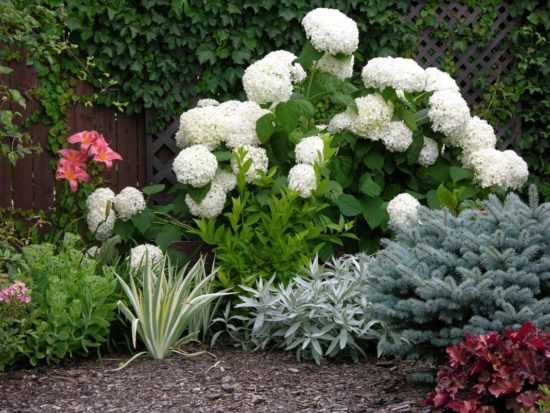
Обрезка гортензии древовидной является важным этапом ее ухода, который позволяет достичь красивой и здоровой кроны растения. Одной из главных причин обрезки является формирование и поддержание желаемой формы растения. Правильно обрезанная гортензия древовидная придает участку элегантность и гармоничность.
Оптимальное время для обрезки гортензии древовидной — это весна или осень. Весенняя обрезка способствует укреплению и росту растения, а осенняя обрезка помогает подготовить гортензию к зимнему периоду и улучшает ее цветение в следующем году.
Существует несколько способов обрезки гортензии древовидной. Первый способ — санитарная обрезка, которая заключается в удалении поврежденных, больных и слабых веток. Это помогает предотвратить распространение заболеваний и паразитов на здоровые части растения.
Второй способ — формирующая обрезка, которая позволяет создать желаемую форму и размер кроны гортензии древовидной. При этом удаляются лишние ветви и сучки, чтобы растение имело правильную структуру и было эстетически привлекательным.
Третий способ — омолаживающая обрезка, которая проводится для удаления старых и увядающих веток. Такая обрезка стимулирует рост новых сильных побегов и способствует обновлению растения.
Вопрос-ответ:
Какая основная особенность гортензии древовидной?
Основная особенность гортензии древовидной заключается в том, что она имеет прямостоячий кустарник или небольшое деревце в высоту до 4 метров.
Как правильно посадить гортензию древовидную?
Для посадки гортензии древовидной необходимо выбрать место с полутенистым микроклиматом, хорошо освещенное утренними и вечерними лучами солнца. Почва должна быть плодородной и хорошо дренированной. Кустарник следует высаживать в яму глубиной и шириной около 50 см, заранее удобренную комплексным удобрением. Посадку рекомендуется проводить весной или осенью.
Как ухаживать за гортензией древовидной?
Уход за гортензией древовидной включает в себя регулярное поливание, подкормку органическими и минеральными удобрениями, удаление отцветших цветков, обрезку весной для формирования красивой кроны. Также важно защитить растение от перегрева и заморозков.
Какие сорта гортензии древовидной существуют?
Существует множество сортов гортензии древовидной, включая «Grandiflora» с большими белыми цветками, «Pee Wee» с компактным кустарником и розовыми цветками, «Limelight» с зелеными цветками, которые постепенно меняются на розовый оттенок, и другие.
Какой срок цветения у гортензии древовидной?
Гортензия древовидная обычно цветет в июле-августе, но длительность цветения может варьироваться в зависимости от сорта и условий выращивания. В благоприятных условиях она может радовать своими цветами до конца осени.




